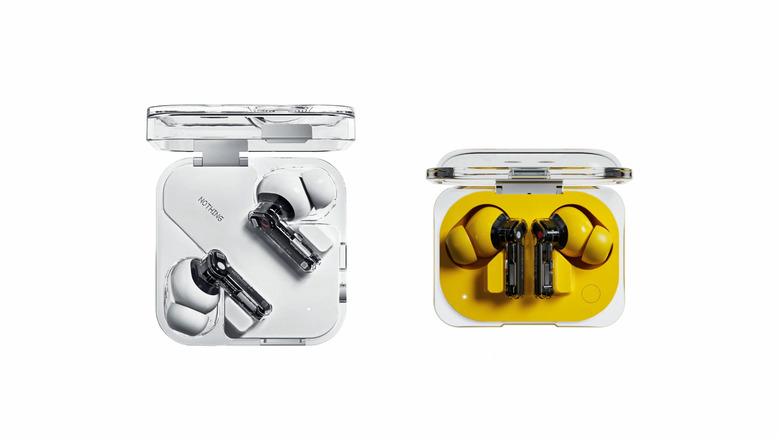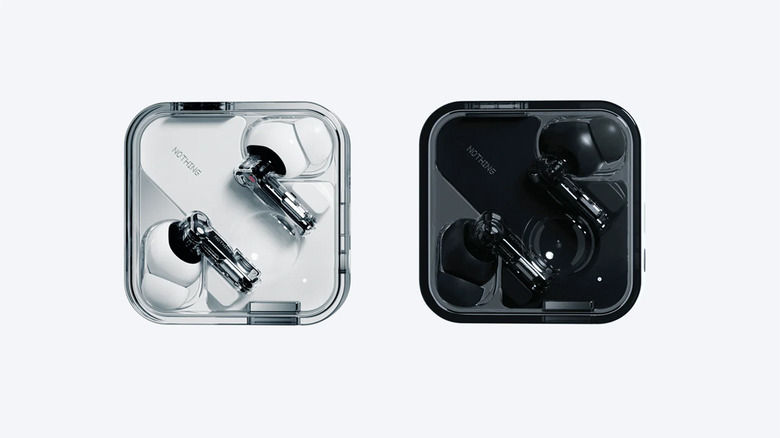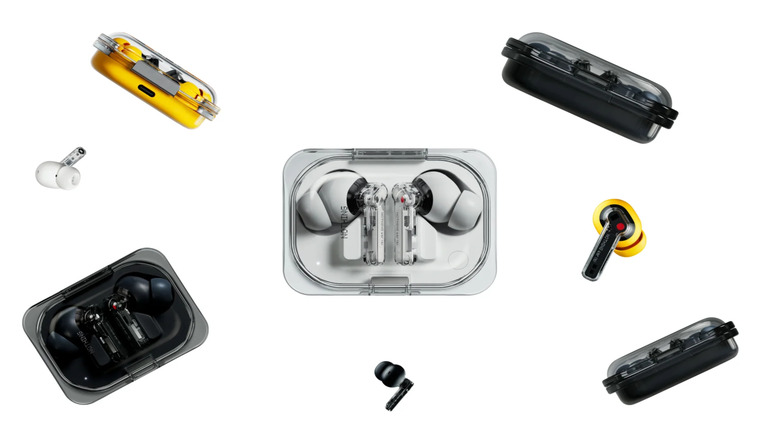Nothing's Latest Earbuds Serve Up ANC And ChatGPT On Demand
Despite being fairly young, Nothing has quickly set itself apart in the market with noticeably different designs compared to other brands. Several of its products already robe in the transparent aesthetic, and two newcomers are being added today. The company announced two new pairs of earbuds — the Nothing Ear and the Nothing Ear (a) — with active noise cancellation, sound improvements over predecessors, and a potential ChatGPT trigger functionality that arrives later this year.
The Nothing Ear is the more expensive pair, running at $149 in the U.S. Although it succeeds in Nothing Ear (2), the brand is dropping a numeric identifier, presumably to emphasize its better audio capabilities without a radical design change. You could call them the Ear (2024), although Nothing doesn't insist on this nor clarify if future products will bear the same name.
Meanwhile, the Nothing Ear (a) uses the same identifier as the Nothing Phone (2a) to affirm itself as the more affordable offering. It is justifiably priced at $99, but you get a swanky yellow color along with the transparent sidelines. Despite the pricing difference, both offer high-fidelity output, but there are some differences that set them apart.
Premium materials justify the markup
Starting with the Nothing Ear, it gets the same case and earbud design as the older Ear (2) and Ear (1) models. The older red and black accents still adorn the design, suggesting a homage to audio cassettes. The changes lie inside the earbuds, which now feature larger 11-millimeter drivers that employ "premium ceramic" materials for the diaphragm for clearer audio.
The earbuds suppress up to 45 decibels of ambient noise and offer features such as adaptive ANC (active noise cancellation) and a transparency mode, along with hi-res playback through LHDC 5.0 and the open-source LDAC Bluetooth codes. The earbuds alone have a claimed battery life of 8.5 hours (without ANC) and are certified IP54 for minimal dust and water resistance.
Meanwhile, the Nothing Ear's case is more resilient, thanks to its IP55 rating. Its battery backup is claimed to be up to 40.5 hours without ANC. Like the previous models, the case also supports wireless charging in addition to fast wired charging.
Along with these hardware features, the Nothing Ear also supports what the company calls an "advanced equalizer" with eight frequency bands and the option to share your custom EQ settings with other users through QR codes.
Ear (a) gets similar features but with trim downs
The cheaper Ear (a) offers many of the same specifications as the Ear but with some cutbacks. For instance, the Ear (a) also gets 11-millimeter drivers but with inferior materials. It lacks adaptive ANC and support for LHDC — although you can still use LDAC, which is commonly available, at least on Android phones. You cannot share EQ profiles like you on the Nothing Ear.
With an IPX2 rating, the Ear (a) case lacks the same dust and water resistance level and only charges over a wired connection. The Ear (a), however, offers a slightly longer battery both on the earbuds (9.5 hours) and the case (42.5 hours). The level of noise cancellation is also similar.
Other identical features include support for customizable controls using pinching gestures on either earbud's stem. The most noteworthy is support for a ChatGPT trigger, allowing you to invoke a GPT-based voice assistant without using your phone. Notably, the app will reside on the phone — and will only work if you have a Nothing phone, so it's unclear how the company plans to filter out triggers from people other than the owners.
While both the Nothing Ear and the Ear (a) have already gone on sale at the official stores, the ChatGPT integration is expected to arrive later through a "gradual rollout," Nothing tells The Verge. For now, it appears exclusive to the two new earbuds, with no clarity about the availability of older earphones.


